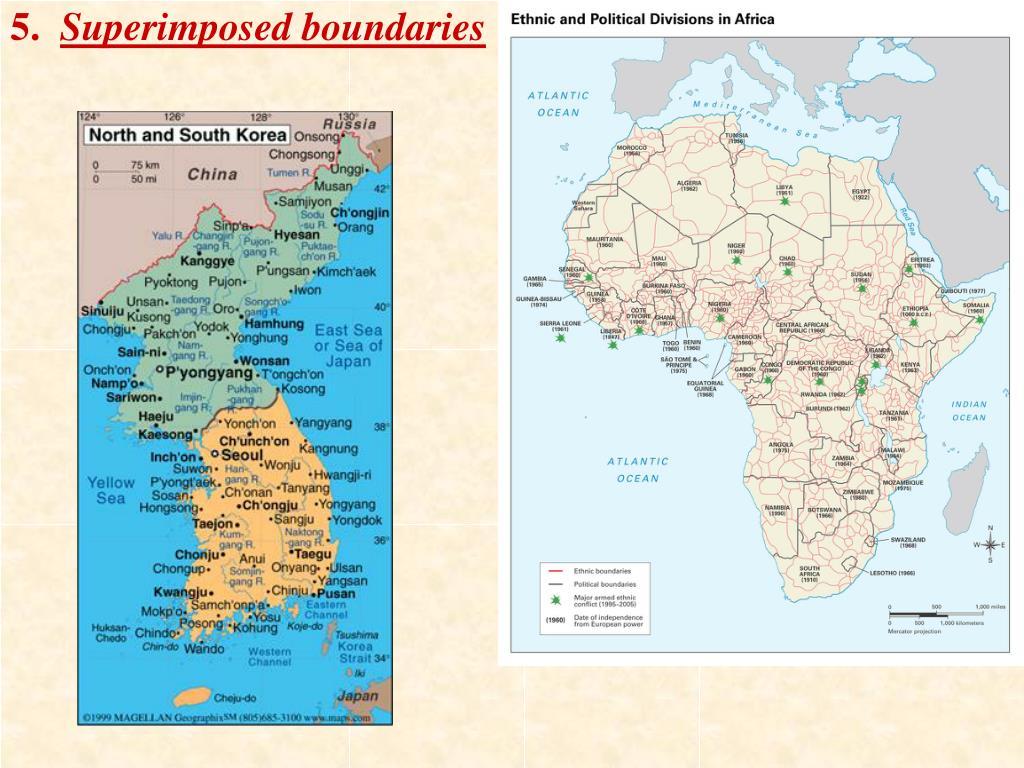
What are the consequences of superimposed boundaries in AfricaĪfrica is a continent with 54 countries and a population of 1.2 billion people. Geometric boundaries can also be used in engineering and surveying to mark an area for certain purposes like design or construction. It can be a polygon, circle, or any other shape.Ī geometric boundary is drawn to define the area of interest and to show the extent of a region. Geometric boundaries is a geometric shape that is drawn around an area. See also the richest people in Ghana and ZambiaĪ geometric boundary is a point, line, or plane that divides a two-dimensional surface into two regions.Ī geometric boundary can be thought of as a point, line, or plane that divides a two-dimensional surface into two regions. The African boundaries were negotiated by European powers at the Berlin Conference regardless of language, ethnic and religious boundaries. The best example of a superimposed boundary are the boundaries in Africa. Superimposed boundary lines are generally placed over, ignoring existing cultural patterns. They are the patterns of interaction that exist between different cultures, and they can be both physical and social. This is where superimposed boundaries come in. When two cultures interact with each other, they will have to find a way to coexist. Superimposed boundaries are a result of the interaction between two different cultures. What Is An Example of Superimposed Boundaries The map of India and Pakistan looks like this because they are both in close proximity to each other. This is an example of what a Superimposed Boundaries AP Human Geography would look like: The Superimposed Boundaries AP Human Geography is a map that shows the boundaries for two different territories on top of each other.

The map is created as an answer to the question, “What does this country look like?” Superimposed Boundaries AP Human Geography is a map that shows the projection of the political boundaries of a country onto the physical surface of Earth. It is a study of the interactions between human beings and their environment, and the ways in which these interactions shape both man’s perception of his surroundings, and his actions in those surroundings. Superimposed Boundaries AP Human Geography is an examination of the relationships between human geography and physical geography. What is Superimposed Boundaries AP Human Geography? Boundary superimposition can be done in two ways: by overlapping the boundaries, or by combining them into a single boundary. The process of merging two or more boundaries is called boundary superimposition. This can be done by overlapping the boundaries, or by combining them into a single boundary. The term “superimposed boundary” was first coined by sociologist Erving Goffman in his book “Asylums: Essays on the Social Situation of Mental Patients and Other Inmates.” Goffman used the term to describe how mental patients are often separated from society by both physical and emotional barriers.Ī superimposed boundary is a barrier that is placed on top of an existing boundary or can be used to create a new boundary, or to reinforce an existing one.Ī boundary superimposition is a process of merging two or more boundaries into one. It can be physical, such as a wall, or it can be emotional, such as the feeling of being left out. A superimposed boundary is placed by people / powers outside of the territory. What are Genetic classification of boundaries?Ī superimposed boundary is a political boundary that is imposed on a person or group of people.What are the consequences of superimposed boundaries in Africa.What Is An Example of Superimposed Boundaries.

What is Superimposed Boundaries AP Human Geography?.


 0 kommentar(er)
0 kommentar(er)
